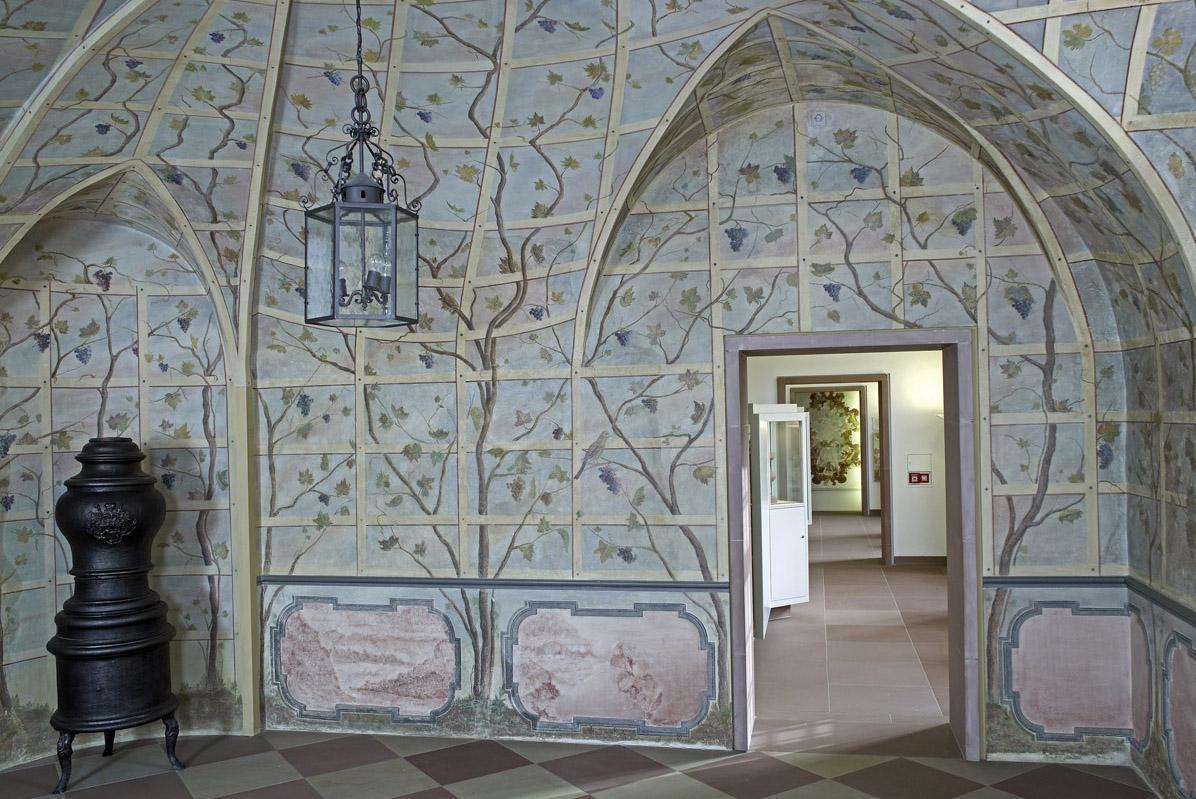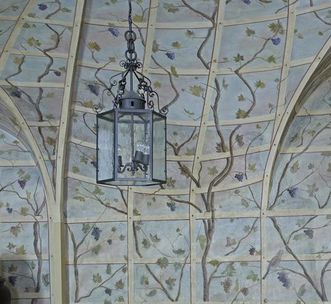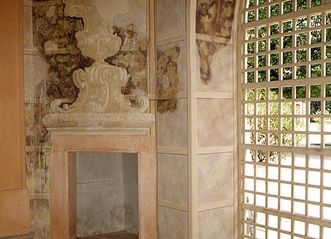A painted "garden arbor"
Paths under wood trellises covered in plants were standard in Baroque gardens. The walls and the flat vault of the Arbor Room are painted with latticework, interwoven with vine leaves, on which birds perch. The painted arbor and the purple, monochrome landscape pictures along the plinth area were an attempt to bring nature inside the palace. Italian halls had similar paintings as early as the 16th and 17th centuries.





